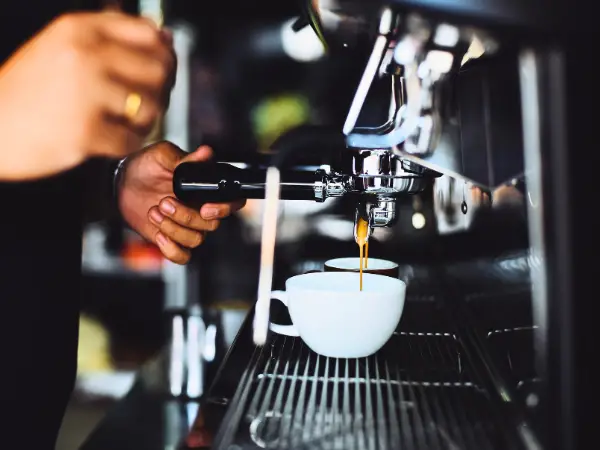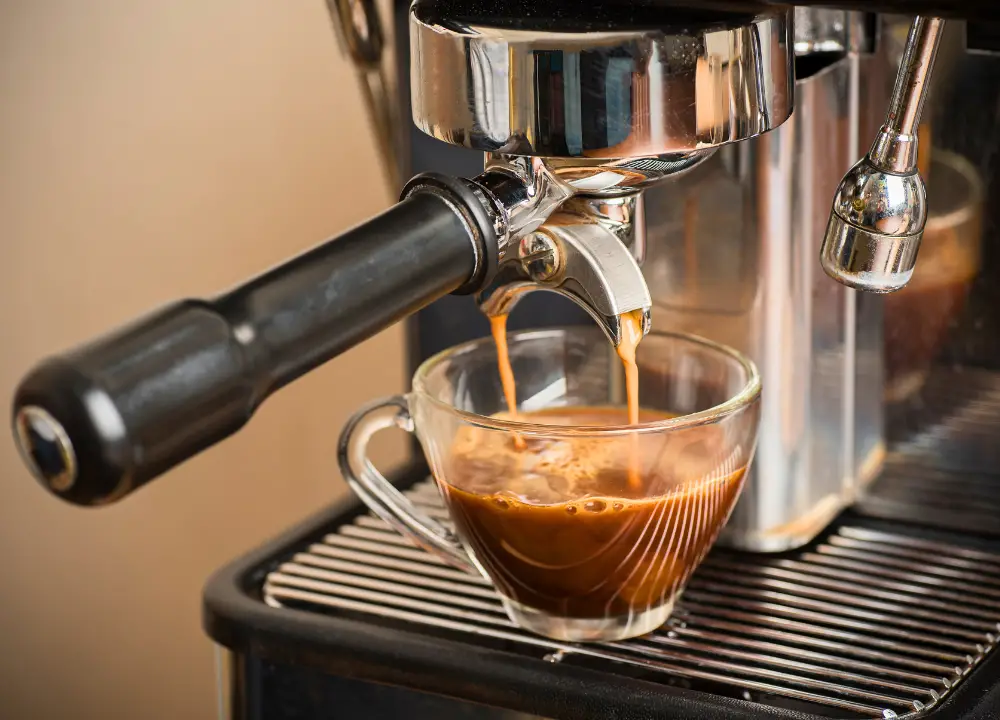With so many types of coffee and machines available, knowing what suits your taste and lifestyle is essential. This comparison will guide you through the benefits and limitations of both options.
Why Coffee And Coffee Machine Comparisons Matter
Comparing coffee and coffee machines is essential for any coffee lover. It helps in finding the best fit for your taste and brewing needs. With many options available, knowing the differences can make your choice easier.
Helping You Choose The Right Coffee Machine
Choosing the right coffee machine can be overwhelming. Many machines offer different features, prices, and brewing methods. Understanding these differences helps you find what suits your lifestyle.
Here are some key factors to consider:
- Brewing Method: Drip, espresso, or French press? Each method has unique benefits.
- Size: Consider your kitchen space and how much coffee you need.
- Ease of Use: Some machines require more steps than others.
- Price: Set a budget. Coffee machines range from affordable to expensive.
- Maintenance: Look for machines that are easy to clean.
By knowing these factors, you can make a more informed choice. A good coffee machine enhances your coffee experience. Choose wisely and enjoy every sip.
Understanding The Unique Flavors Of Coffee
Coffee offers a wide range of flavors. Each type of coffee bean brings something special. Knowing these flavors helps you enjoy your coffee more.
Here are some popular coffee types and their flavor profiles:
- Arabica: Sweet, fruity, and complex.
- Robusta: Strong, bitter, and earthy.
- Colombian: Balanced, nutty, and mild.
- Sumatra: Rich, full-bodied, and spicy.
Brewing methods also affect flavor. For example, espresso is strong and concentrated. French press coffee is smooth and rich. Here’s a quick summary:
| Brewing Method | Flavor Profile |
|---|---|
| Espresso | Bold and rich |
| Drip Coffee | Mild and balanced |
| French Press | Full-bodied and smooth |
Understanding these flavors helps you select the right coffee. Experiment with different beans and brewing methods. Enjoy the unique taste of each cup.
How We Compare Coffee And Machines
Our goal is to compare different types of coffee and machines. This helps you make informed choices. We focus on several key factors that affect both coffee quality and machine performance.
Criteria For Coffee Machine Comparisons
When comparing coffee machines, we consider various criteria. These criteria help us identify the best machines available. Here are the main factors we look at:
- Type of Machine: Drip, espresso, French press, or single-serve.
- Brewing Time: How fast the machine brews coffee.
- Capacity: How much coffee can be brewed at once.
- Ease of Use: How simple it is to operate the machine.
- Cleaning: How easy it is to clean and maintain.
- Price: Cost in relation to features offered.
Factors That Influence Coffee Flavor
The flavor of coffee depends on several factors. Understanding these factors can help you choose better coffee.
- Type of Coffee Beans: Arabica vs. Robusta beans.
- Roast Level: Light, medium, or dark roast affects taste.
- Grind Size: Coarse, medium, or fine grind impacts extraction.
- Water Quality: Clean and filtered water makes better coffee.
- Brewing Temperature: Ideal range is 195°F to 205°F.
- Brewing Time: Longer brewing can lead to bitterness.
By knowing these factors, you can brew a better cup of coffee. Each choice matters in your coffee experience.

Coffee Machine Comparisons
Many options exist, each with unique features. We will look at the Nespresso Aeroccino models and compare the Moka Pot with traditional coffee machines
Nespresso Aeroccino 3 Vs 4
The Nespresso Aeroccino 3 and 4 are popular milk frothers. Both create creamy froth for coffee drinks. The main differences between them lie in their design and features.
- Design: The Aeroccino 4 has a sleek design and improved spout.
- Frothing Options: The Aeroccino 4 offers three frothing options, while the 3 has only two.
- Capacity: Both machines hold up to 240 ml of liquid, ideal for multiple servings.
| Feature | Aeroccino 3 | Aeroccino 4 |
|---|---|---|
| Frothing Options | 2 | 3 |
| Heating Function | Yes | Yes |
| Design | Classic | Sleeker |
The Aeroccino 4 is often favored for its versatility. It allows for more creativity in drinks. Both models are easy to use and clean. Choose based on your frothing needs.
See the full Review (here).
Moka Pot Vs Coffee Machine
The Moka Pot and traditional coffee machines serve different brewing styles. The Moka Pot brews coffee using steam pressure. It creates a strong and rich flavor. On the other hand, coffee machines use automatic brewing methods.
- Flavor: Moka Pot coffee is bold, while coffee machines can brew lighter flavors.
- Brewing Time: Moka Pot takes about 5-10 minutes. Coffee machines can vary from 5 to 15 minutes.
- Ease of Use: Moka Pots require more attention. Coffee machines often have one-button operations.
| Feature | Moka Pot | Coffee Machine |
|---|---|---|
| Brewing Method | Stovetop | Automatic |
| Flavor Profile | Strong | Varied |
| Cleaning | Manual | Automatic |
Choose the Moka Pot for rich flavors and hands-on brewing. Pick a coffee machine for convenience and ease. Each option has unique benefits for coffee lovers.
See the full Review (here).
Coffee Type Comparisons
This section compares popular coffee types, focusing on Colombian and Brazilian coffee, Arabica and Robusta beans, and popular brands like Starbucks and Nescafé.
Colombian Vs Brazilian Coffee
Colombian and Brazilian coffees are two of the most popular types worldwide. They each have distinct flavors and growing conditions. Here’s a closer look:
- Colombian Coffee:
- Grown in high altitudes
- Known for its smooth, rich flavor
- Often has a hint of sweetness and mild acidity
- Brazilian Coffee:
- Grown in lower altitudes
- Typically has a nutty, chocolatey flavor
- Often less acidic than Colombian coffee
The table below summarizes key differences:
| Feature | Colombian Coffee | Brazilian Coffee |
|---|---|---|
| Altitude | High | Low |
| Flavor | Smooth and rich | Nutty and chocolatey |
| Acidity | Mild | Low |
Choosing between Colombian and Brazilian coffee depends on your taste. Try both to find your favorite!
See the full Review (here).
Arabica Vs Robusta
Arabica and Robusta are the two main types of coffee beans. Each has unique characteristics that affect flavor and strength.
- Arabica Beans:
- Higher quality and more expensive
- Fruity and floral flavors
- Lower caffeine content
- Grown at higher altitudes
- Robusta Beans:
- Stronger and more bitter taste
- Higher caffeine content
- Less expensive
- Grown at lower altitudes
Here’s a quick comparison:
| Characteristic | Arabica | Robusta |
|---|---|---|
| Flavor | Fruity and floral | Strong and bitter |
| Caffeine | Low | High |
| Cost | High | Low |
Arabica is preferred for specialty coffees. Robusta is often used in espresso blends. Choose based on your flavor preference.
See the full Review (here).
Starbucks Coffee Vs Nescafé
Starbucks and Nescafé are popular coffee brands. They offer different experiences and flavors. Here’s what sets them apart:
- Starbucks Coffee:
- Freshly brewed coffee from whole beans
- Wide variety of drinks and flavors
- Focus on high-quality, specialty coffee
- Nescafé:
- Instant coffee for quick preparation
- Convenient and easy to use
- Variety of blends and flavors
Here’s a comparison table:
| Feature | Starbucks | Nescafé |
|---|---|---|
| Preparation | Fresh brew | Instant |
| Quality | High | Varied |
| Variety | Wide | Limited |
Choose Starbucks for a café experience. Opt for Nescafé for quick and easy coffee at home. Your choice depends on convenience and taste.
See the full Review (here).

Brewing Methods
This section compares cold brew, brewed coffee, and iced coffee. Each method has unique qualities and tastes. Let’s explore.
Cold Brew Vs Brewed Coffee
Cold brew and brewed coffee are distinct methods, each with its own process and flavor profile. Cold brew coffee involves steeping coarsely ground coffee in cold water for 12 to 24 hours. This method results in a smooth, less acidic beverage. Brewed coffee, on the other hand, uses hot water to extract flavors quickly. This method typically takes only a few minutes.
Here are some key differences:
- Temperature: Cold brew uses cold water; brewed coffee uses hot water.
- Time: Cold brew takes hours; brewed coffee takes minutes.
- Flavor: Cold brew is smooth and sweet; brewed coffee can be more acidic and bitter.
| Feature | Cold Brew | Brewed Coffee |
|---|---|---|
| Brewing Time | 12-24 hours | 3-5 minutes |
| Serving Temperature | Cold | Hot |
| Acidity Level | Low | High |
Cold brew is great for those who prefer a less acidic taste. Brewed coffee suits those who enjoy a quick, hot drink. Both methods offer unique flavors. Your choice depends on your taste and time.
See the full Review (here).
Cold Brew Vs Iced Coffee
Cold brew and iced coffee may seem similar, but they have different brewing processes. Cold brew is made by steeping coffee grounds in cold water. Iced coffee, however, starts with hot brewed coffee, which is then cooled down and served over ice. This difference affects their flavors and overall experience.
Here are some important comparisons:
- Brewing Method: Cold brew is steeped cold; iced coffee is brewed hot.
- Flavor Profile: Cold brew is smooth; iced coffee can have a stronger flavor.
- Temperature of Coffee: Cold brew is served cold; iced coffee can be warm initially.
| Aspect | Cold Brew | Iced Coffee |
|---|---|---|
| Brewing Time | 12-24 hours | 3-5 minutes |
| Initial Temperature | Cold | Hot |
| Flavor | Less bitter | Can be bitter |
Cold brew appeals to those wanting a mellow drink. Iced coffee fits those who like a quick, refreshing boost. Both are excellent choices for summer. Your preference will guide your brewing method.
See the full Review (here).
Coffee Drink Comparisons
This guide will explain popular coffee drinks and their differences. Knowing these differences will help you choose your next coffee. Let’s dive into these comparisons.
Flat White Vs Latte
The flat white and latte are both creamy coffee drinks. They use espresso and steamed milk. However, their milk texture and ratios differ.
- Flat White: Contains a higher ratio of coffee to milk.
- Latte: Has more milk and foam, making it creamier.
Here’s a quick comparison:
| Feature | Flat White | Latte |
|---|---|---|
| Espresso Shots | 2 | 1-2 |
| Milk Type | Steamed milk | Steamed milk with foam |
| Texture | Velvety | Creamy |
The flat white offers a stronger coffee flavor. The latte is sweeter and milder. Choose based on your preference for coffee intensity.
See the full Review (here).
Cortado Vs Macchiato
Cortado and macchiato are both espresso-based drinks. They differ in milk content and preparation.
- Cortado: Equal parts espresso and steamed milk.
- Macchiato: Espresso with a small amount of milk or foam.
Here’s a simple table for clarity:
| Feature | Cortado | Macchiato |
|---|---|---|
| Espresso Shots | 1-2 | 1 |
| Milk Type | Steamed milk | Foam or splash of milk |
| Flavor | Balanced | Strong |
The cortado is smoother and more balanced. The macchiato has a stronger coffee flavor with less milk. Choose what fits your taste.
See the full Review (here).
Macchiato Vs Cappuccino Vs Latte
These three drinks share espresso as a base. Each has its own milk texture and flavor profile.
- Macchiato: Espresso marked with milk.
- Cappuccino: Equal parts espresso, steamed milk, and foam.
- Latte: Espresso with more steamed milk than foam.
To see the differences, check this table:
| Feature | Macchiato | Cappuccino | Latte |
|---|---|---|---|
| Espresso Shots | 1 | 1 | 1-2 |
| Milk Type | Small amount | Equal parts | More steamed milk |
| Texture | Strong | Frothy | Creamy |
Macchiatos are intense and strong. Cappuccinos are fluffy and balanced. Lattes are smooth and milky. Each drink suits different moods.
See the full Review (here).
Breve Vs Latte
Breve and latte both use espresso and milk. The difference lies in the type of milk used.
- Breve: Made with half-and-half.
- Latte: Made with steamed milk.
Here’s a quick comparison:
| Feature | Breve | Latte |
|---|---|---|
| Milk Type | Half-and-half | Steamed milk |
| Texture | Rich and creamy | Smooth and velvety |
| Flavor | Richer | Balanced |
Breves are creamier and richer than lattes. Lattes offer a softer and more balanced flavor. Choose based on your milk preference.
See the full Review (here).
Wet Vs Dry Cappuccino
Wet and dry cappuccinos refer to the milk foam texture. They both use espresso and steamed milk.
- Wet Cappuccino: More steamed milk, less foam.
- Dry Cappuccino: More foam, less steamed milk.
Look at this table for clarity:
| Feature | Wet Cappuccino | Dry Cappuccino |
|---|---|---|
| Milk Ratio | Higher | Lower |
| Foam Amount | Less | More |
| Flavor | Smoother | Stronger |
Wet cappuccinos are smoother and creamier. Dry cappuccinos are stronger with a rich foam layer. Choose based on your preference for milk and foam.
See the full Review (here).
Coffee Bean & Ingredient Comparisons
Coffee beans, espresso beans, and even chocolate beans have unique qualities. Their flavor profiles, uses, and preparations can vary significantly.
Coffee Beans Vs Espresso Beans
Coffee beans and espresso beans are not as different as many think. Both come from the same plant, Coffea. The main differences lie in how they are processed and prepared.
Here are key distinctions:
- Roasting: Espresso beans are roasted longer. This gives them a darker color and stronger flavor.
- Grind size: Espresso beans are ground finer. This helps create a rich, concentrated shot.
- Brewing method: Regular coffee uses drip or pour-over methods. Espresso requires an espresso machine for brewing.
Check the table below for a quick comparison:
| Feature | Coffee Beans | Espresso Beans |
|---|---|---|
| Roast Level | Medium to Light | Dark |
| Grind Size | Coarse to Medium | Fine |
| Brewing Method | Drip, French Press | Espresso Machine |
Choose based on your preference. If you enjoy a rich, bold flavor, opt for espresso beans. For a milder taste, regular coffee beans work best.
See the full Review (here).
Coffee Beans Vs Chocolate Beans
Chocolate beans, or cocoa beans, also have a place in the coffee comparison. Both beans come from tropical plants. Yet, they offer different flavors and uses.
Coffee beans are from the Coffea plant. They provide the familiar drink we love. Chocolate beans come from the Theobroma cacao plant. They produce cocoa powder and chocolate.
Here’s how they differ:
- Flavor: Coffee beans have a rich, robust flavor. Chocolate beans have a sweet, creamy taste.
- Uses: Coffee beans brew a hot drink. Chocolate beans make desserts, candies, and drinks.
- Nutritional Value: Coffee beans have caffeine. Chocolate beans contain flavonoids, which are good for health.
Here’s a quick overview:
| Feature | Coffee Beans | Chocolate Beans |
|---|---|---|
| Origin | Coffea Plant | Theobroma Cacao Plant |
| Flavor Profile | Rich and Bitter | Sweet and Creamy |
| Main Use | Beverage | Desserts and Snacks |
Both beans bring joy to many. Coffee wakes you up. Chocolate makes treats enjoyable. Choose what fits your mood.
See the full Review (here).
Cocoa Beans Vs Coffee Beans
Cocoa beans and coffee beans are often confused. They share some similarities but are quite different. Each has its unique characteristics.
Cocoa beans come from cacao trees. They are processed to make chocolate. Coffee beans, as mentioned, are for brewing coffee.
Let’s compare:
- Processing: Cocoa beans require fermentation and drying. Coffee beans go through roasting.
- Caffeine Content: Coffee beans have more caffeine than cocoa beans. This makes coffee a stronger stimulant.
- Health Benefits: Both offer antioxidants. Coffee boosts alertness, while cocoa improves heart health.
Here’s a side-by-side comparison:
| Feature | Cocoa Beans | Coffee Beans |
|---|---|---|
| Source | Cacao Tree | Coffea Plant |
| Caffeine Level | Low | High |
| Main Product | Chocolate | Coffee |
Both ingredients can enhance flavors in various recipes. Use them according to your taste.
See the full Review (here).
Coffee Accessories
Understanding the differences among these accessories helps you make better choices. Coffee filters are one of the most important accessories. They can greatly affect the flavor and quality of your coffee.
White Vs Brown Coffee Filters
Coffee filters come in two main types: white and brown. Each type has unique characteristics. Knowing these differences can help you pick the right one for your needs.
White Coffee Filters:
- Made from bleached paper.
- Usually thinner than brown filters.
- Can produce a cleaner taste.
- Less noticeable paper flavor.
Brown Coffee Filters:
- Unbleached paper, retains natural color.
- Thicker and sturdier.
- Can add a slight earthy flavor.
- Considered more eco-friendly.
| Feature | White Filters | Brown Filters |
|---|---|---|
| Material | Bleached Paper | Unbleached Paper |
| Thickness | Thinner | Thicker |
| Flavor | Cleaner | Earthy |
| Environmental Impact | Less Eco-friendly | More Eco-friendly |
Choosing between white and brown coffee filters depends on your taste preferences and values. If you want a cleaner cup, white filters are a good choice. For those who prefer a richer flavor, brown filters may be better. Both types serve their purpose, so you can enjoy your coffee your way.
See the full Review (here).

